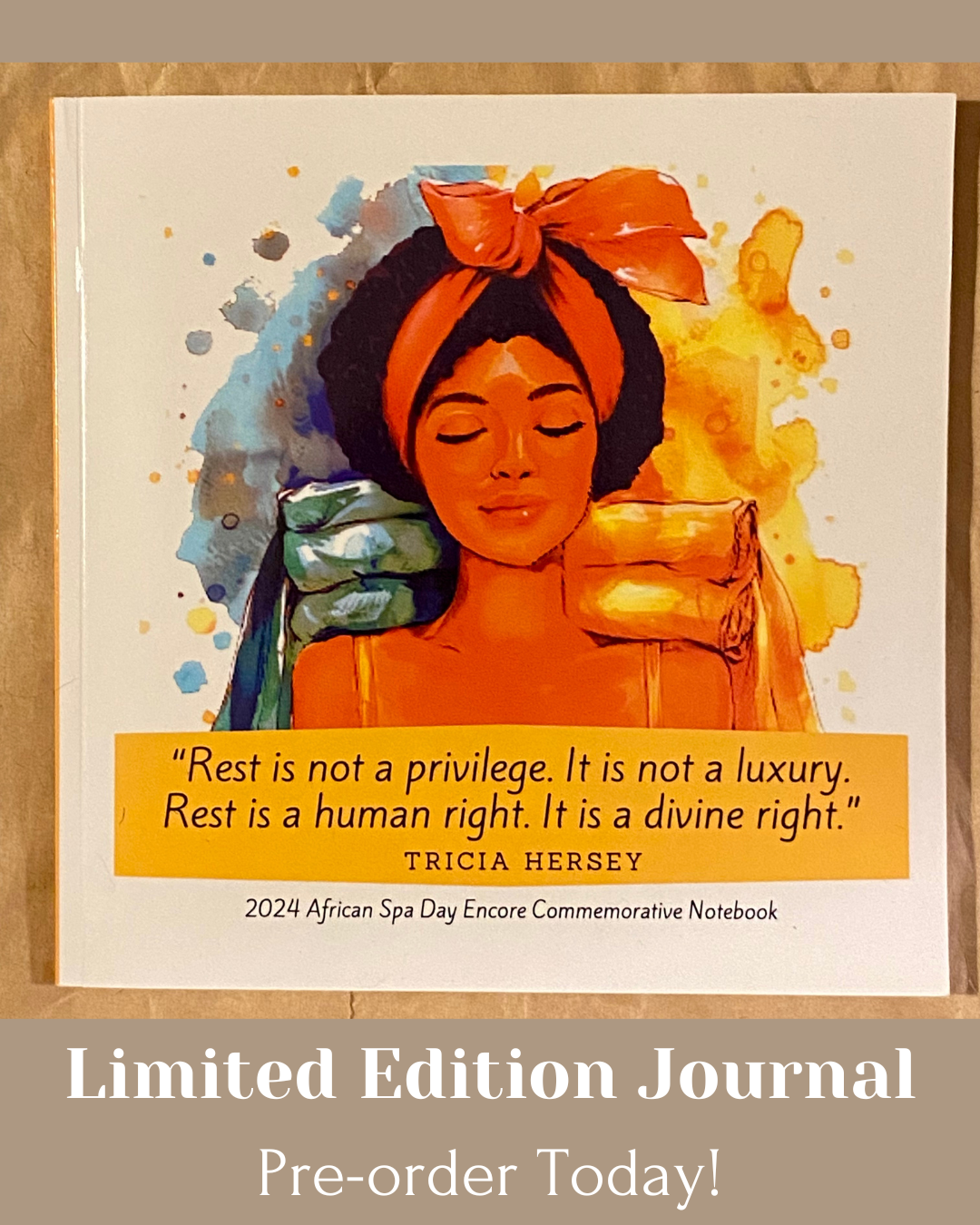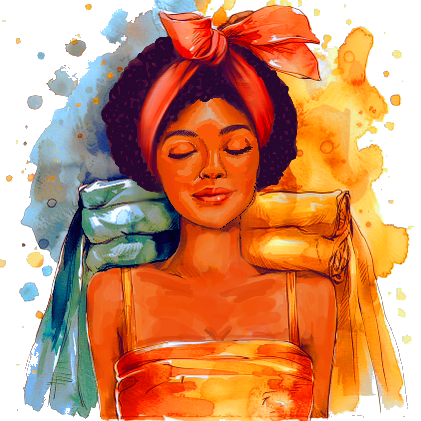
On the Limitations of Using Artificial Intelligence to Collaboratively Create Commemorative Black Art
By Alessandra Payne and Shakeema Funchess
I consider myself to be a trendsetter which is why I am always hesitant when certain technologies are force fed unto the public. I, also, do not agree with technologies where the inventors place the responsibility of product testing on the public. So for these reasons, I am on board with Artificial Intelligence (AI) technology when it is used to provide accessibility services like closed captioning or when it is used to conduct inventory audits. But, AI is not a user friendly technology when creating folk and pop art that showcases people of color.
I recently collaborated with other women owned businesses to curate a spa wellness mixer to promote rest and relaxation by celebrating and exploring African wellness practices. I wanted to promote my dear friend, Shakeema Funchess, a children’s book author and the owner of Adventures in Zen Books. Shakeema and I collaborated to create a custom journal that showcased women of color engaging in self care to commemorate this event, and I saw AI’s limitations firsthand.
Because AI generated art is based on art (sometimes copyrighted) that is uploaded to the internet, there are many sexist and racist depictions of people of color. Hollywood inspired art portrays people of color with European features with olive skin. Asian pop art portrays people of color with gray or jaundiced skin, with Eurocentric or cartoonishly ethnic hair textures, hypersexualized body types, and with Anglo or animalistic features. AI cannot distinguish between caricatures and pop/folk art so people of color are more likely to be misrepresented in AI generated artwork if not correctly prompted.

It was an interesting experience where I realized that AI -- being readily available to the public -- would magnify instances of cultural misrepresentation and the public’s (forced) consumption of it. This experience also had me wondering why aren’t Black artists ever consulted when creating work in their area of expertise? I asked Shakeema to explain her experiences creating culturally sensitive AI art and this is what she had to say.
“As a sketch artist, I ventured into the realm of AI-generated art with caution, recognizing its inherent limitations and potential pitfalls. When it comes to creating realistic artwork featuring people of color, the challenges are numerous. First and foremost, the mainstream AI platforms are not built with representation in mind. In many ways, AI has co-opted mass media’s ongoing lack of diversity. In its infancy, AI was unable to understand the nuance of depicting diverse ethnicities and cultures authentically. In my experience, creating non-melanated characters does not require the same amount of manual intervention and oversight. Through updated coding, AI has improved on rendering less biased and stereotypical depictions of people of color but has not achieved, in my opinion, true diversity.
“Machine learning has taught AI to walk but it still needs clear prompts and guidance to regenerate respectfully accurate depictions of color. Even then, there is no guarantee of success as AI still struggles with subtleties like skin tone, facial features and other refinements. It sometimes requires 10 or more iterations to achieve a desired outcome. For this reason, AI will never replace human artistry. As with anything the outcome is only as good as the source.
“AI has revolutionized the art world, particularly in terms of accessibility and innovation, but its current limitations and implicit bias may pose a challenge to its longevity. It is crucial that front end and back-end users approach AI with a critical eye to ensure it does not encroach upon artistic expression or ethnic representation. “


After several costly prompts, Shakeema was able to generate an image that I decided to “correct” myself using old school graphic design methods. Our goal was to correct this image to create our commemorative journal in time for our event.

We uploaded it to social media where it will, hopefully, be used to positively influence future artwork generated by AI. One day, we hope that AI art will be multidimensional and culturally representative, but that day is not today. If you are a human artist, you have the right to critique and correct AI art. If you are a consumer of AI art, you have the right to provide feedback (i.e., leave dislikes, post dissenting comments) on any AI art that is culturally disrespectful.
We need to actively disrupt the discriminatory trends in AI art generation. We need to support AI artists who create culturally affirming artwork. We need to teach AI how to identify culturally insensitive and inaccurate portrayals of people of color and require back end users to create prompts that exclude racist characterizations. But, most importantly, we need to create a safe space for human artists to create culturally affirming art to their heart’s content. AI art and human made art are not substitutes which is why humans need to fearlessly edit AI art and consume it responsibly.
Note: This commemorative notebook can be purchased online at by visiting this link: https://salvageandshine.com/collections/rejuvenized-thanks-to-african-spa-day-encore.
